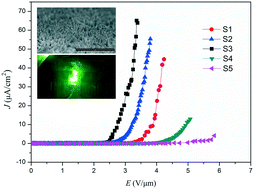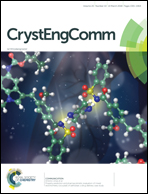Effect of synthesis conditions on the morphology and field-emission properties of hydrothermally grown Zn-doped SnO2 nanorods
Abstract
Zn-Doped SnO2 (Zn–SnO2) nanorod arrays with different morphologies have been directly grown on a copper substrate by a simple organic-free hydrothermal process. The effect of synthesis conditions including the Zn+ concentration and ethanol volume ratio in the solvent on the morphology and field emission (FE) properties of Zn–SnO2 was investigated. It was found that the aspect ratio of the products increases with the increase of Zn+ concentration. The ethanol-to-water ratio also played an important role in the shaping morphology of Zn–SnO2. Under the optimized hydrothermal conditions, sword-like Zn–SnO2 nanorods with the highest aspect ratio (∼11.25) were obtained. Moreover, the sword-like nanorods possess the best FE properties, including the lowest turn-on field of ∼2.75 V μm−1, the highest field-enhancement factor of ∼1970 and excellent stability with fluctuations within 11%. These results are attributed to the sturdy structure of the sword-like nanorods as well as the fortified junction formed between the emitter and the highly conductive copper substrate interface.



 Please wait while we load your content...
Please wait while we load your content...